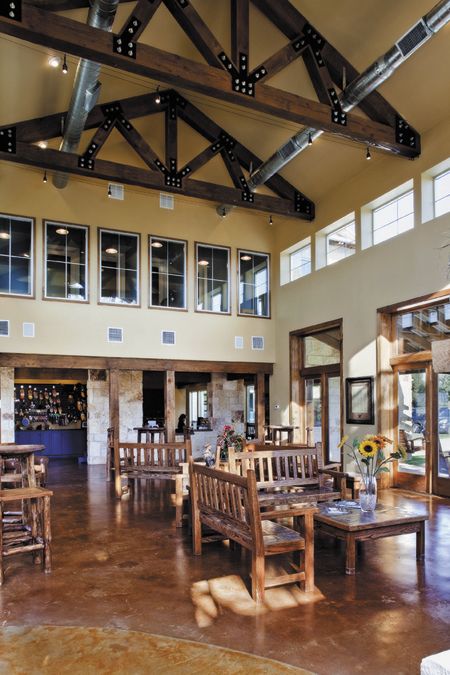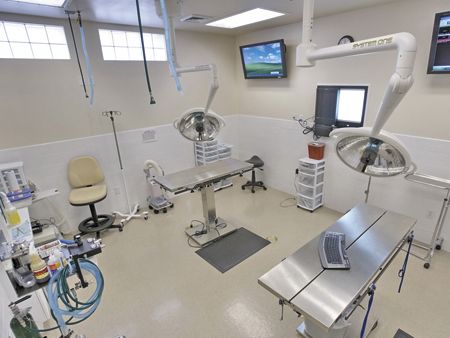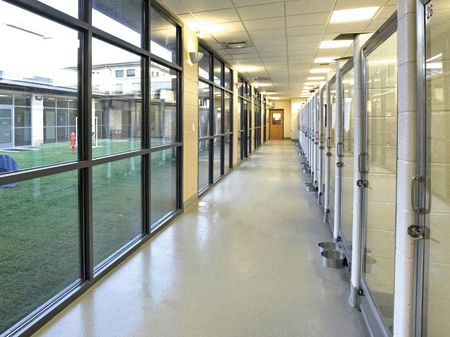Light it up
See examples of natural light infusing the veterinary hospital environment, and hear from this Veterinary Economics Hospital Design Conference speaker why you want as much as you can get (within reason).

The reception area in Zoot Pet Hospital and Luxury Boarding in Georgetown, Texas, is a good example of "borrowed light" from those high windows in the welcome area to bring daylight to interior rooms on the second floor. (All images courtesy of author)
“A room is not a room without natural light. Natural light gives the time of day and allows the mood of the seasons to enter.”
- architect Louis Kahn
Let the sun shine in
Here are a few ways architects put “daylighting” principles into play in a veterinary hospital:
Number, size and spacing of windows
Glazing materials on windows
Finishes, colors and reflecting quality of interior walls, floors and ceilings
Devices that shade, both interior and exterior
Skylights and solar tubes
Borrowed light through perimeter rooms (windows that face windows)
Atriums and courtyards
We balance the benefits of all that sunlight with some of the problems: too much brightness, too much glare, too much heat gain and too much wear and tear leading to fading on interior finish materials and furnishings.
Proper lighting not only provides visual information (you can see where you're walking) but also constitutes a powerful modulator of our circadian rhythm and many nonvisual functions, including the state of alertness, mental focus and cognitive performance. So, when designing an animal hospital, how can we reap the benefits that proper lighting can offer? The answer is an art and practice called daylighting.
Daylighting is an architectural design strategy using natural daylight to provide or enhance a building's interior lighting. Particular attention is given to daylighting while designing a building when the aim is to maximize visual comfort or to reduce energy use.
The amount of daylight received in an interior space can be determined by measuring illuminance on a grid or undertaking a daylight factor calculation. Architects and engineers can provide valuable expertise when designing a building to achieve maximum daylighting benefits, but don't neglect a cost analysis to weigh the value of any daylighting feature against its installed cost.

Treatment area in Hawthorne Park Animal Care Center in Bloomington, Illinois.
I would attempt to put in as many windows in as many rooms as you can that call for it. Some rooms you don't want light in, like rooms that use scopes. And, in the back of my mind, I'm also thinking, is this a south- or west-facing window, so we need to worry about glare at certain times and certain seasons?

Surgery suite in All Valley Animal Care Center in Meridian, Ohio.
I went to a hospital once with a big bowl of sunglasses of all kinds outside the surgery room. The doctor told me, “You may want to put on sunglasses.” I figured I was fine. I walked in there and found a skylight over the surgery, with a blinding effect from all the glare off the white walls and gleaming stainless steel. Make sure you can control the light in rooms like that, like this one.

Boarding and play area at All Valley Animal Care Center in Meridian, Ohio.
Energizing daylight comes to healthy and recovering pets thanks to big windows facing directly from the play area into the kennels.
Dan Chapel is president of Chapel Associates in Little Rock, Arkansas, a nationally recognized firm specializing in animal facility design. His firm has participated in the design of more than 750 veterinary hospitals, boarding kennels, and animal shelters.